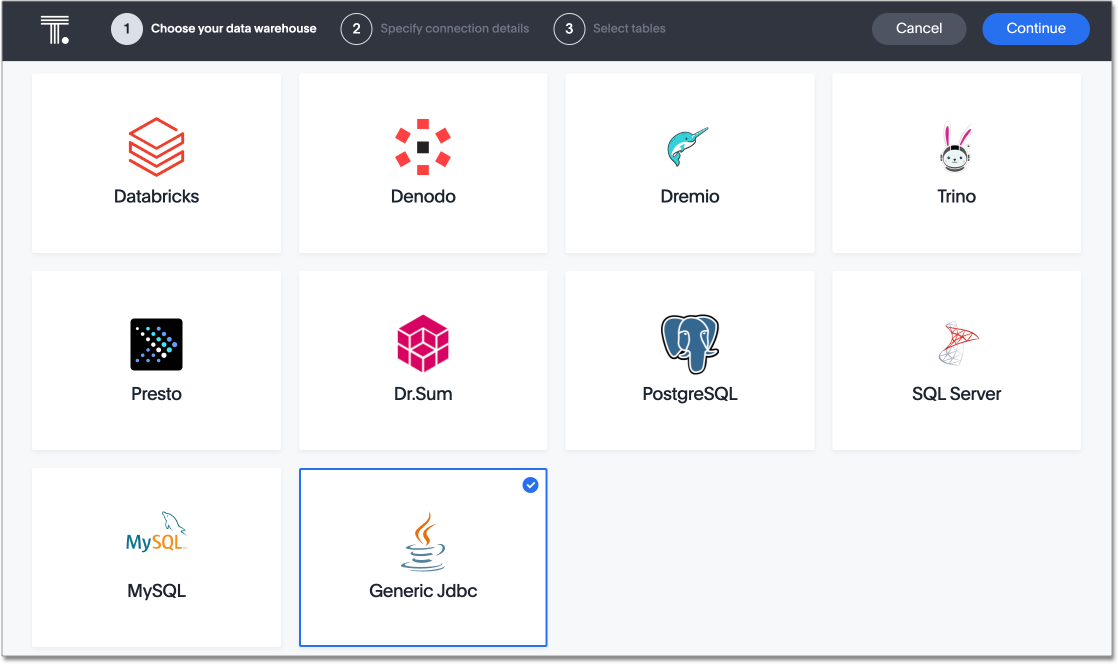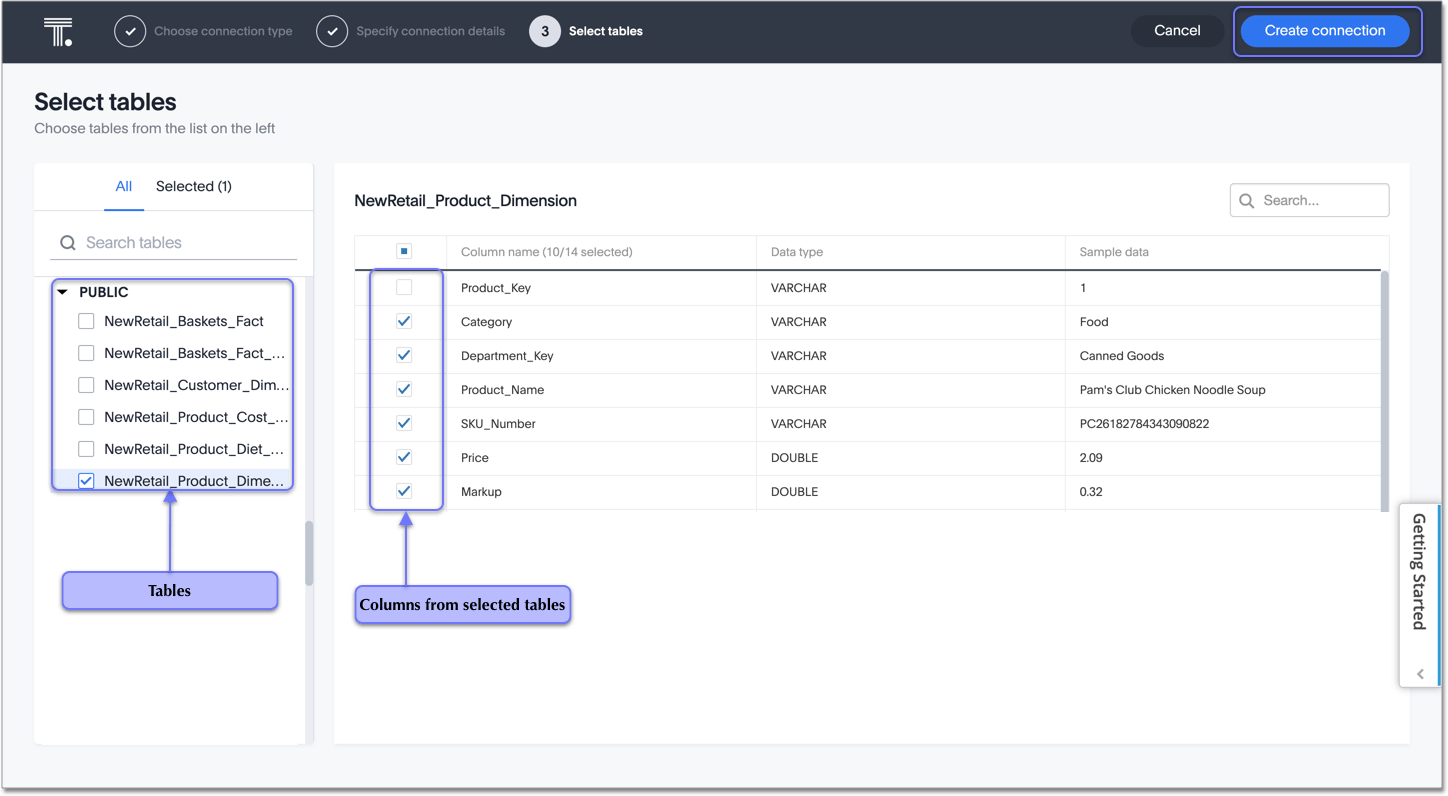Add a Generic JDBC connection
Prerequisites
Before you create a Generic JDBC connection, you must provide a public URL for the JDBC Driver JAR and raise a support ticket by contacting ThoughtSpot Support. This JAR must be compatible with java 11. For security reasons, you cannot directly upload the JARs to ThoughtSpot. ThoughtSpot security reviews the driver, after which the driver is available for use.
Once the drivers are reviewed, the Generic JDBC connection is enabled with the list of drivers you provided as options to select and create a connection.
Add a connection
To connect to Generic JDBC, follow these steps:
-
Select Data in the top navigation bar.
-
Open the Connections tab in the left navigation bar, and select the Others tile. Alternatively, select + Create new in the left navigation bar, select Connection, and select the Generic JDBC tile.
-
Create a name for your connection, a description (optional), then select the Generic JDBC connection type, and click Continue.

-
Enter the connection details for your Generic JDBC data source.

Refer to the Generic JDBC connection reference for more information on each of the specific attributes you must enter for your connection. Note that you must create a support ticket to have ThoughtSpot upload your JDBC Driver JAR(s) before you can create a connection.
-
(Optional) Configure proxy for your Generic JDBC connection by doing the following:
-
Select the Advanced Config menu to reveal the Key and Value fields.
-
For Key, enter httpProxy, and for Value, enter <proxyHost>:<proxyPort>.
Example: 40.142.32.22:5050
-
-
(Optional) Provide additional key-value pairs that you need to set up your connection to Generic JDBC or customize additional JDBC parameters supported by Generic JDBC, by doing the following:
-
Select the Advanced Config menu to reveal the Key and Value fields.
-
Enter your key and value information.
-
To add more keys and values, select the plus sign (+), and enter them.
Any key-value pairs that you enter must be defined in your Generic JDBC data source. Key-value pairs are case-sensitive. -
-
Select Continue.
-
Select tables (on the left) and the columns from each table (on the right), and then select Create connection.

A message appears indicating the number of tables and columns that will be added to your connection.
-
Select Create.
Once the connection is added, you can search your Generic JDBC database right away by selecting Search now.
Your new connection appears on the Data > Connections page. Select the name of your connection to view the tables and columns in your connection.
The connection you just created is a link to the external data source. If there are any joins in the selected tables of the external data source, those are imported into ThoughtSpot.
You can now perform a live query on the selected tables and columns of your connection. Because the selected tables and columns in your connection are linked, it may take a while to initially render the search results. This is because ThoughtSpot does not cache linked data. With linked data, ThoughtSpot queries the external database directly, which is slower than querying data that is stored in ThoughtSpot’s database.
You can modify a Generic JDBC connection in the following ways:
You can also Delete a Generic JDBC connection.
See the Connection reference for details of connection parameters.
Share a connection
Users with can manage data or admin privileges can share connections with other users or groups that have can manage data privileges. Once granted access to a connection, users can add, remove, and modify tables in that connection.
To share a connection with another user, follow these steps:
-
Navigate to the Data tab and select Connections.
-
Select the checkbox next to the name of the connection you want to share, and click Share.
-
In the Share connection dialog, enter the ID of the user or group you want to share the connection with. You can use the search bar to find the user or group.
-
Select Done.
Note that to remove share access from a connection, you must navigate to the Share connection dialog and select Remove access to the left of the user group or name.



